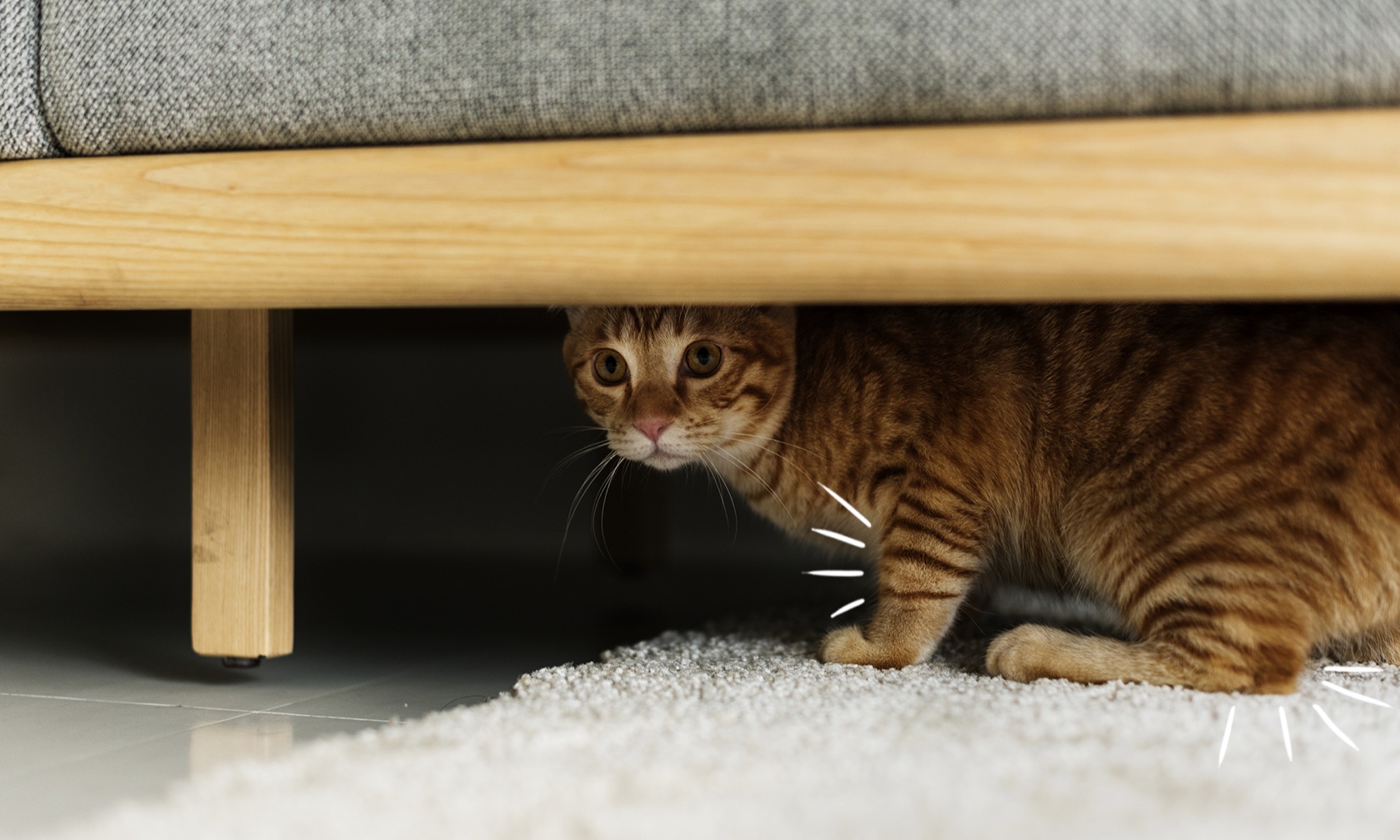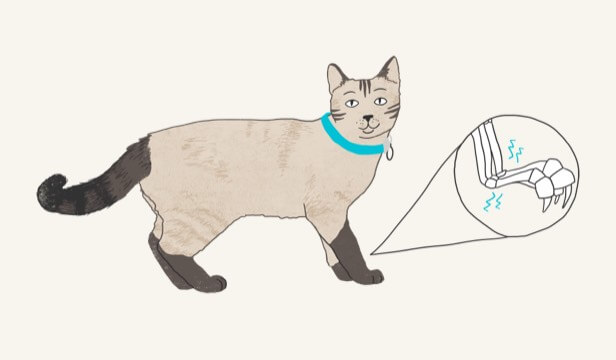Cats love the bird’s eye view – jumping up to the window sill for birdwatching or finding that perfect sunny spot. When those favorite spots seem out of reach for your cat, they may be showing you signs of pain due to osteoarthritis.

Chronic pain, like that from osteoarthritis (OA), is surprisingly common in cats. Clinical studies have found signs of osteoarthritis in 61% of cats over the age of six[1] and in 90% of cats over the age of 12[2]. 40% of those cats showed signs of pain[3]. Chronic osteoarthritis pain can become a serious health problem for your cat — without treatment, the pain will continue to get worse. Helping your cat begins by talking with your veterinarian and coming up with a medical treatment plan to relieve your cat’s pain.
Recognizing signs of a cat in pain can be difficult because cats hide their discomfort as much as possible (it’s a survival strategy left over from when they lived in the wild). But there’s good news — because you know your cat’s playful ways and what they love better than anyone, you’re the best person to spot when changes in these behaviors could be signs of osteoarthritis pain.
Everyday Changes in Your Cat That Could Indicate Pain
An analysis of around 300 cats with osteoarthritis conducted at the North Carolina State University College of Veterinary Medicine identified six everyday behaviors that – when they change – strongly correlate with the presence of osteoarthritis pain[4]. These include:
- How your cat jumps up onto a higher surface
- How your cat jumps down from a higher surface
- How your cat climbs up stairs
- How your cat climbs down stairs
- How your cat looks as it runs
- How willing your cat is to chase moving objects
What these changes might look like in your cat is animated in this Cat Osteoarthritis Quiz.
Other Signs of a Cat in Pain
One or more of these changes could also indicate osteoarthritis pain in cats:
- A decrease in overall energy and activity levels
- Less interactive with family members (human or pet)
- Less interested in playing
- Urinating or defecating outside their litter box
- Grooming themselves less
- Licking or chewing a certain spot
- Purring more (purring can actually be a sign of pain)
- Changes in personality (more irritable or withdrawn)
- Flinching or meowing when being petted or picked up
- Scratching or biting
- Sleeping in a hunched position
Share Your Observations With Your Veterinarian
Cats hide almost everything, especially pain. They’re masters at disguising their discomfort as part of their survival instinct; this is especially true in the veterinary exam room. Your veterinarian relies on you to report changes in your cat’s behavior seen at home for more accurate diagnoses. It’s a great idea to take videos of your cat doing these activities so you can show your vet next time you see them.
They're masters at disguising their discomfort as part of their survival instinct
Using an objective screening tool like the Cat OA Quiz is a good first step in measuring where your cat is on the spectrum between “healthy” and a cat with joint disease. Share the results with your veterinarian. If your cat is diagnosed with osteoarthritis, your vet can recommend a safe and effective pain management protocol, which can greatly improve your cat’s outlook and quality of life — not to mention your peace of mind.
ZPC-00427R1
IMPORTANT SAFETY INFORMATION: For use in cats only. Women who are pregnant, trying to conceive or breastfeeding should take extreme care to avoid self-injection. Allergic reactions, including anaphylaxis, could potentially occur with self-injection. Solensia should not be used in breeding cats or in pregnant or lactating queens. Solensia should not be administered to cats with known allergy to frunevetmab. The most common adverse events reported in a clinical study were vomiting and injection site pain. See full Prescribing Information.
INDICATION: For the control of pain associated with osteoarthritis in cats.
- Slingerland LI et al, Cross-sectional study of the prevalence and clinical features of osteoarthritis in 100 cats, Vet J. 2011 Mar;187(3):304‑9
- Lascelles BD, Dong YH, Marcellin-Little DJ, et al. Relationship of orthopedic examination, goniometric measurements, and radiographic signs of degenerative joint disease in cats. BM C Vet Res. 2012;8:10.
- Enomoto, M, et al., Anti-nerve growth factor monoclonal antibodies for the control of pain in dogs and cats. Vet Rec, 2019.
- Development of a Screening Checklist for the Detection of Musculoskeletal Pain in Cats. © 2019 North Carolina State University




